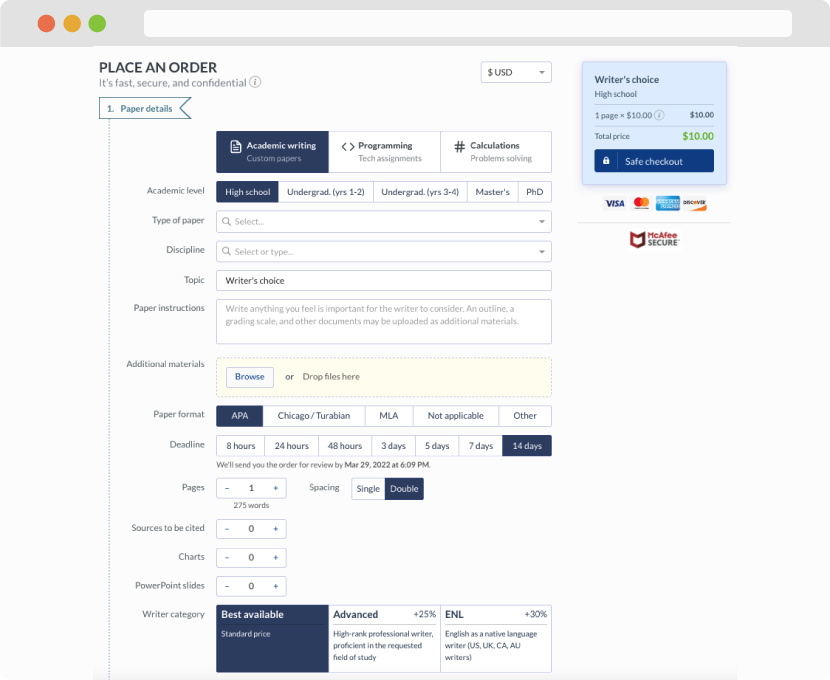You should respond to both discussions separately–with constructive literature material- extending, refuting/correcting, or adding additional nuance to their posts.
Minimum 150 words each reply.
Incorporate a minimum of 2 current (published within the last five years) scholarly journal articles or primary legal sources (statutes, court opinions) within your work. Journal articles should be referenced according to the current APA style (the online library has an abbreviated version of the APA Manual).
Discussion 1:
Caring for African American, Mexican, and Navajo Populations
Importance of Folk Medicine Practices and Folk Healers to African Americans in Rural Settings
Folk medicine still plays a crucial role in the lives of African Americans in rural areas as a culturally appropriate and accessible form of healing. A root doctor and a spiritual healer offer daycare therapies from African, Native American, and European cultures (Beasley et al., 2022). This study focuses on the fact that many African Americans with limited access to healthcare rely on these healers because of the historical lack of trust in mainstream medical facilities. Such mistrust resulted from past immoral medical experiments like the infamous Tuskegee Syphilis Study, which led to reluctance to use traditional healthcare services. They use herbs, prayer, and other rituals to treat illnesses while using biomedical methods. Nurses must learn about these customs and adapt treatment accordingly; cultural sensitivity is the best way to achieve this. Lack of recognition of the role of folk medicine may decrease patient satisfaction and adherence to prescribed treatments.
Cultural Imposition in Mrs. M.’s Case
Cultural imposition occurs when a healthcare professional fails to respect a client’s values system and imposes their own. For instance, Mrs. M.’s nurse disregards her postpartum dietary restrictions without paying attention to her cultural norms as a Mexican American, which includes a traditional belief in the relationship between food consumption and health. For example, many Mexican Americans observe the so-called ‘hot’ and ‘cold’ foods, which can be traced back to humoral medicine and impacts food preferences, especially during pregnancy and breastfeeding, according to Häyry & Sukenick (2023). Some foods positively affect maternal and child health and well-being, while others are perceived to affect the woman or her baby adversely. The case of the nurse who compounds the problem by telling Mrs. M to eat all that she wants, regardless of her belief system, is an instance of cultural imperialism. Cultural values and belief systems in health care: Healthcare workers must understand cross-cultural treatment and care, work within patients’ frame of reference, and embrace their cultural beliefs. This way, nurses can address the patient’s beliefs while fostering compliance and buy-in to the recommended treatment plan (Giger & Haddad, 2021).
Communication Barriers for Non-Navajo Nurses Providing Care to Navajo Clients
Research on Navajo client care revealed that non-Navajo nurses face communication challenges, which limit efficient care delivery. One potential issue is a lack of direct communication, which is restricted by hierarchy, bureaucracy, and cultural or language differences. According to Bennett & Paddock (2022), the Navajo people value telling stories and providing circumlocutions rather than giving straight answers. Some health practitioners may misinterpret this type of communication because they are not used to it and may think the patient is elusive or disobedient. Healthcare workers must use an understanding and gentle approach and ask the Navajo patients open-ended questions since they are accustomed to using storytelling to share their experiences.
Another common barrier is eye contact avoidance, where people do not look directly into the eyes of the other. Eye contact is generally avoided with people in positions of authority, such as doctors and nurses, as opposed to prolonged eye contact, which may be seen as a sign of disrespect among the Navajo people (Bennett & Paddock, 2022). It may become particularly problematic for non-Navajo nurses, for they may perceive such behavior, including avoidance of eye contact, as a sign of their subjects’ disinterest or dishonesty. To enhance communication, nurses should understand the physical limits of the patient, refrain from forcing him/her to make eye contact, and instead make a head bow or a slight hand movement to show active listening. Using concepts from this inventory, such as appropriate touch, eye contact, and socio-centric language, healthcare professionals can restore the Navajo Nation people’s trust and improve their experiences with the healthcare system.
References
Beasley, E. A., Wallace, R. M., Coetzer, A., Nel, L. H., & Pieracci, E. G. (2022). Roles of traditional medicine and traditional healers for rabies prevention and potential impacts on post-exposure prophylaxis: A literature review. PLoS Neglected Tropical Diseases, 16(1), e0010087.
https://doi.org/10.1371/journal.pntd.0010087Links to an external site.
Bennett, E. C., & Paddock, E. (2022). Subtle approach to the mores of the Navajo nation. In Difficult decisions in surgery: an evidence-based approach (pp. 273–304).
https://doi.org/10.1007/978-3-030-84625-1_20Links to an external site.
Giger, J. N., & Haddad, L. (2021). Transcultural nursing: Assessment and intervention (8th ed.). St. Louis, MO: Elsevier.
Häyry, M., & Sukenick, A. (2023). Imposing a lifestyle: A new argument for antinatalism. Cambridge Quarterly of Healthcare Ethics, 33(2), 238–259.
https://doi.org/10.1017/s0963180123000385Links to an external site.
Discussion 2:
Several factors can be attributed to the importance of folk medicine and healers in rural African American communities.
These are cultural heritage: they are deeply rooted in African American culture, derived from various African healing traditions combined during slavery.
A holistic approach: African American indigenous healing takes into account the connection between body and mind in treating the physical and emotional sides of health.
Folk healers: Many folk healers are respected members of the community who will deliver culturally familiar and accessible care (Giger & Haddad, 2021).
Spiritual component: A large number of healing practices contain a spiritual component that coincides with the high religious beliefs in the African American communities.
Intergenerational knowledge transfer: Cultural wisdom of healing skills and knowledge are usually inherited from older generations and more especially from mothers to their daughters.
Language differences: There are many Navajo patients who, especially elders, can only speak their native language and therefore it can be challenging for a nurse who is not a Navajo speaker to communicate with them.
Navajo culture respects indirect communication and may interpret direct eye contact as disrespectful. Because they are not Navajo nurses, they might misinterpret lack of eye contact or long pauses in conversation as disinterest or noncompliance (Keeler, 2018).
Cultural beliefs about health and illness: Navajo patients may have different ideas on the causes and treatments of illnesses from what we would consider Western medicine.
Dignity of elders and traditional healers: Navajo patients place more emphasis on advice from family elders and traditional healers than that of healthcare professionals which can lead to conflicts in treatment plans.
Healthcare professionals need to be aware of these barriers and try to comprehend and respect the culture of patients’ beliefs and practices to provide culturally congruent care. Using this approach can improve patient outcomes and satisfaction in the context of cross cultural healthcare (Giger & Haddad, 2021). It can also be stated that cultural sensitivity training in nursing schools can create a bridge in the gaps and promote a more inclusive healthcare environment.
References
Giger, J. N., & Haddad, L. (2021). Transcultural nursing: Assessment and intervention (8th ed.). Elsevier.
Keeler, J. (2018, September 13). Why Navajo hair matters: It’s our culture, our memory, and our choice. ICT News. https://ictnews.org/archive/why-navajo-hair-matters-its-our-culture-our-memory-and-our-choice
Mayo Clinic. (2022, September 15). Addressing health care barriers during Hispanic Heritage Month [Video]. YouTube. https://youtu.be/7kpAmYI3MX4
Essay Writing Service Features
Our Experience
No matter how complex your assignment is, we can find the right professional for your specific task. Achiever Papers is an essay writing company that hires only the smartest minds to help you with your projects. Our expertise allows us to provide students with high-quality academic writing, editing & proofreading services.
Free Features
Free revision policy
$10Free bibliography & reference
$8Free title page
$8Free formatting
$8How Our Dissertation Writing Service Works

First, you will need to complete an order form. It's not difficult but, if anything is unclear, you may always chat with us so that we can guide you through it. On the order form, you will need to include some basic information concerning your order: subject, topic, number of pages, etc. We also encourage our clients to upload any relevant information or sources that will help.
Complete the order form
Once we have all the information and instructions that we need, we select the most suitable writer for your assignment. While everything seems to be clear, the writer, who has complete knowledge of the subject, may need clarification from you. It is at that point that you would receive a call or email from us.
Writer’s assignment
As soon as the writer has finished, it will be delivered both to the website and to your email address so that you will not miss it. If your deadline is close at hand, we will place a call to you to make sure that you receive the paper on time.
Completing the order and download